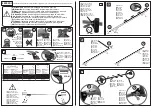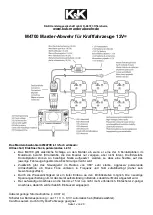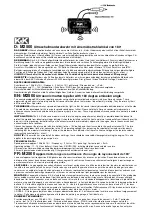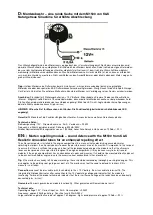
9.4
Firmware Programming
The set of 5 header pads on the bottom right of the PCB is used for
programming the microchip. The pinout is the same as recommended
by Microchip’s “In-Circuit Serial Programming
™
(ICSP
™
) Guide” and
is compatible with most in-circuit serial programmers. We usually
recommend the Microchip PICkit2, but many other programming
devices will work as well. The firmware can be flashed either with the
Cycle Analyst powered up, or from the 5V supply of the programming
device.
10.
Operation in Wet and Cold Conditions
The Cycle Analyst enclosure contains a clear sealed window to protect
the circuitboard and LCD from water exposure. There is no problem
using the meter in light rain. However, in cases of prolonged exposure
to wet conditions, it is possible for moisture to enter the box though the
back cover which is not sealed. This can cause the window to fog up in
cold conditions and render the display difficult to read. Should this
occur, simply remove the back cover so that the moisture can escape
and let the unit dry thoroughly indoors. When it is reassembled, you
may consider using a sealant around the lip and screw holes to render
the box fully waterproof.
o
o
The LCD screen is specified to operate between -10 C to 50 C. At the
colder end of the temperature range, the response time of the LCD
segments is slow, and so rapidly changing digits and screen changes
will appear as a blur. The underlying operation of the internal circuitry
is unaffected.
20
MCLR
5V
Gnd
Data
Clock
Programming
Header



































